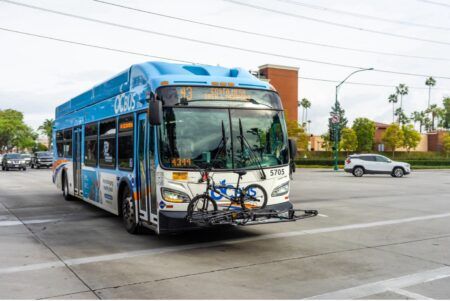TransitScreen, the provider of public transport information for smart cities, has launched MobilityScore, a publicly available website providing measurement of multimodal transport options.
MobilityScore is available for any internet connected device, and helps users determine how easy it is to get around from their exact location, by offering a comprehensive mobility rating. It provides an easy-to-understand transportation score, measuring access to not only buses, trains and taxis, but also ridesharing, bikesharing and carsharing choices.
MobilityScore provides a numerical transportation score ranging from 0 (no available mobility choices) to 100 (excellent mobility choices) for any address within the USA and Canada, beginning with the 165 million residents of the top 35 urban regions.
The company says it could be used by anyone that is thinking of buying a house in a new neighborhood, renting an apartment in a new city, or booking a hotel or Airbnb accommodation for an upcoming trip, as it provides information on how easy it is to get around from that exact spot without a car.
Based in Washington DC, the company provides multimodal transport data in all major cities in the USA, as well as other regions across the world. Its TransitScreens provide real-time displays of transportation choices at a given location, helping people make informed, sustainable decisions to improve quality of life in cities. The launch of MobilityScore continues TransitScreen’s mission to deploy technology to help people be aware of the travel options around them, with the scoring system including all the transportation services found on the company’s public information displays.
“Transportation is continually evolving, yet as new choices, including ridesharing, bikesharing and carsharing emerge, tools for measuring transportation access have not kept up,” said Dr Matt Caywood, co-founder and CEO of TransitScreen. “We created MobilityScore as the solution, a common framework that is future-proof and can incorporate current and future transportation choices.”




